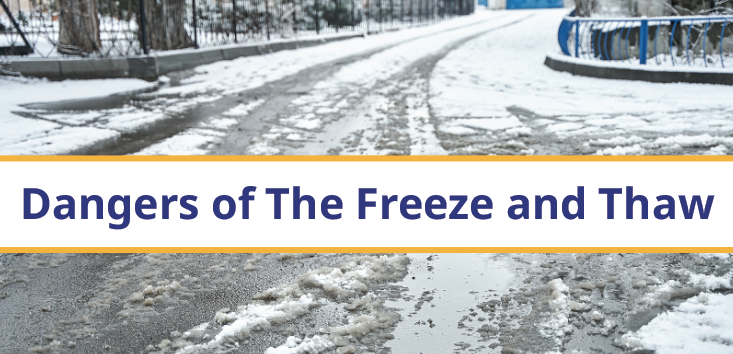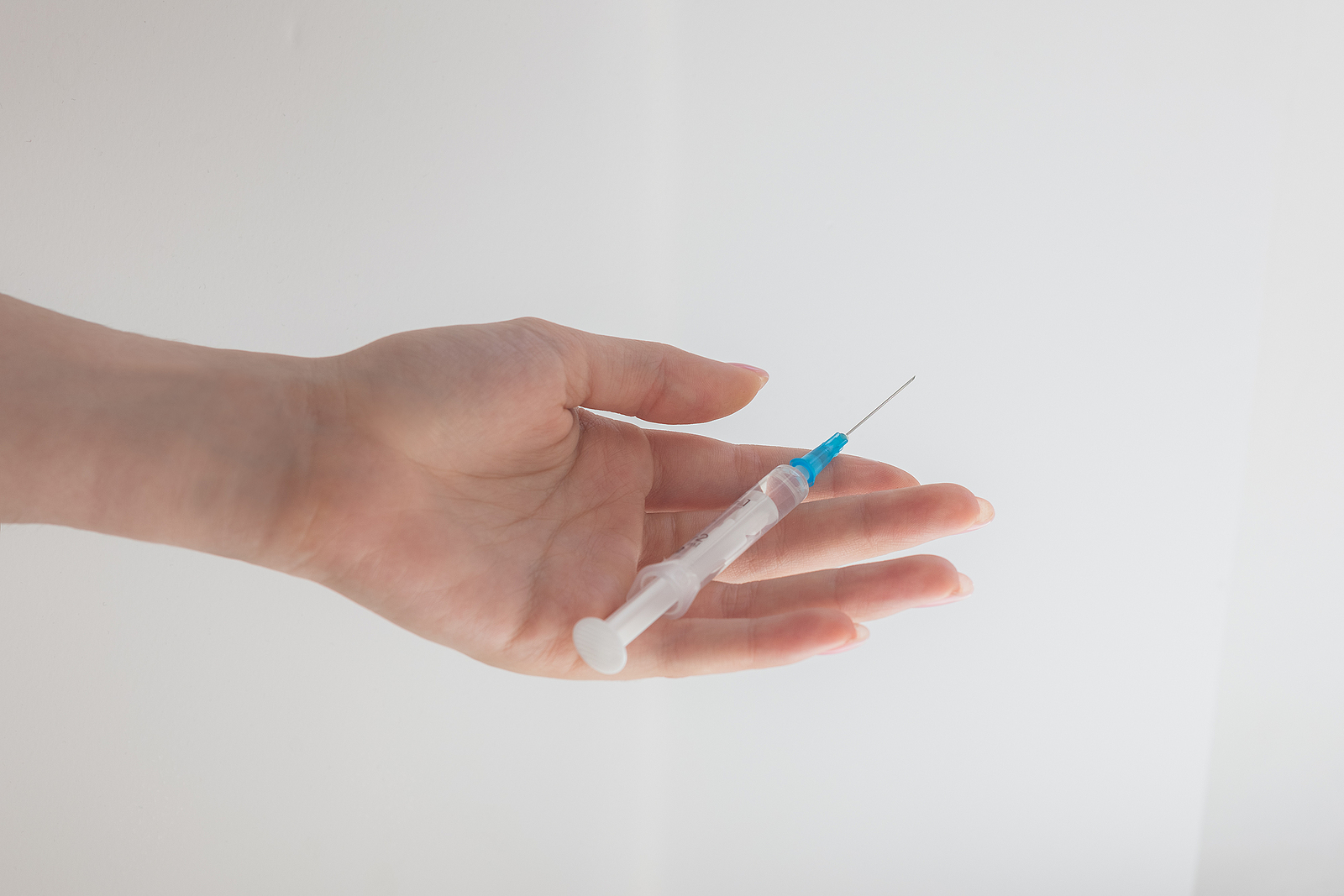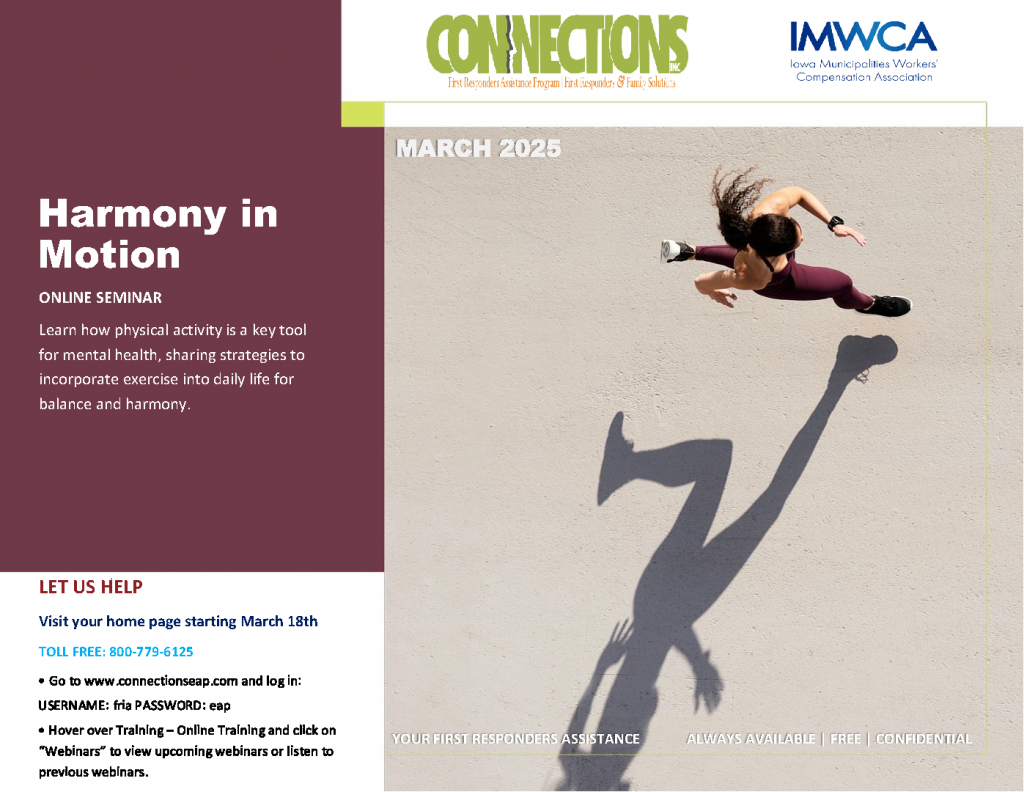
With February in the rearview mirror and the prospects of warmer weather, it’s easy to want to forget about ice and snow and focus on spring. However, with the chance of precipitation in March and April and the fluctuation of temperatures during these two months, slips and falls due to ice are still possible. In fact, besides the initial snow and ice events in late fall and early winter, the highest number of slip and falls due to ice occurs during these two months.
One way to address this issue is to hold a second round of slip and fall prevention in March to inform employees of the potential conditions due to freeze and thaw. Not only is ice and snow a problem but lifts in sidewalks and drives due to frost heaves can also occur during this time. Employees can become desensitized to the hazards after walking months on snow and ice and lose their awareness.
The second step to prevent slips and falls is to reiterate your policy on wearing slip-resistant footwear. People generally start out wearing their footwear in the fall, but once it looks like spring, they start to forget about wearing the footwear as the situation dictates.
While it would be ideal to hope that we are done with snow and ice for the year, we know that this is Iowa, and the chance of that is probably low. So, while we do have nice days in March and April to enjoy, it is still necessary to be prepared for a few bad days of snow and ice yet to come.

Handling Accidental Needle Stick Injuries
At IMWCA, one type of claim we frequently see—especially in EMS and Public Health Departments—is accidental needle sticks. While not overly common, these incidents can be complex to navigate.
Key Considerations After a Needle Stick Incident
When evaluating a needle stick injury, the following factors should be assessed immediately:
- What was the needle used for?
Needles used for medical injections or those contaminated with bodily fluids carry a higher risk of exposure to infectious diseases. - What is the source of the needle?
If the needle came from a patient with a known infection, the risk increases. However, even needles from unknown sources should always be treated as potentially hazardous. - Was the needle freshly used?
A recently used needle may pose a greater risk than one that has been sitting in a non-contaminated environment.
Immediate Steps to Take
One of the first actions you should take is obtaining authorization for blood testing from the individual whose blood was the potential contaminant. This can be facilitated through the Public Health or EMS medical director. If the individual agrees to testing, this can help avoid unnecessary testing and post-exposure prophylaxis for the affected employee.
Regardless of your organization’s established protocols, you should always call Company Nurse for guidance. They will provide specific instructions on seeking medical care and next steps.
When the employee seeks medical attention, they should bring all relevant information, including details about the incident and whether the source individual is willing to be tested. Depending on the exposure risk, multiple follow-up visits may be necessary, and as the employer, you should ensure the employee attends all required appointments.
Documentation and Incident Review
- OSHA Reporting: Needle stick injuries must be recorded on your OSHA 300 log as an exposure incident. However, these incidents should be documented without including any employee names.
- Incident Review: After any needle stick incident, your organization should conduct an incident review. This helps identify potential improvements to procedures, training, or equipment that could reduce the likelihood of future occurrences.
By taking proactive steps, following the correct reporting protocols, and continuously improving safety measures, your organization can help minimize risks and ensure proper care for affected employees.
Register Now For IMWCA University
Topic Overview:
Wednesday, April 23
- Indianola Waste Water Treatment Facility Tour
- Introduction to Training Basics for UTV Users
- Stop the Bleed Training
Thursday, April 24
- Opening General Session: Reasonable Compassion
- Breakout Sessions
- The Leadership Mindset: Building Accountable and Collaborative Teams
- Starting and Maintaining a Safety Program
- Round Table Discussion Options
- Underwriting
- Claims Q&A
- Mastering Difficult Conversations: Leadership Strategies for Workplace Challenges
- OSHA Q&A
- Finding/Selecting a Designated Provider
- Closing General Session: Optimizing Injury Reporting & Triage for Better Outcomes






